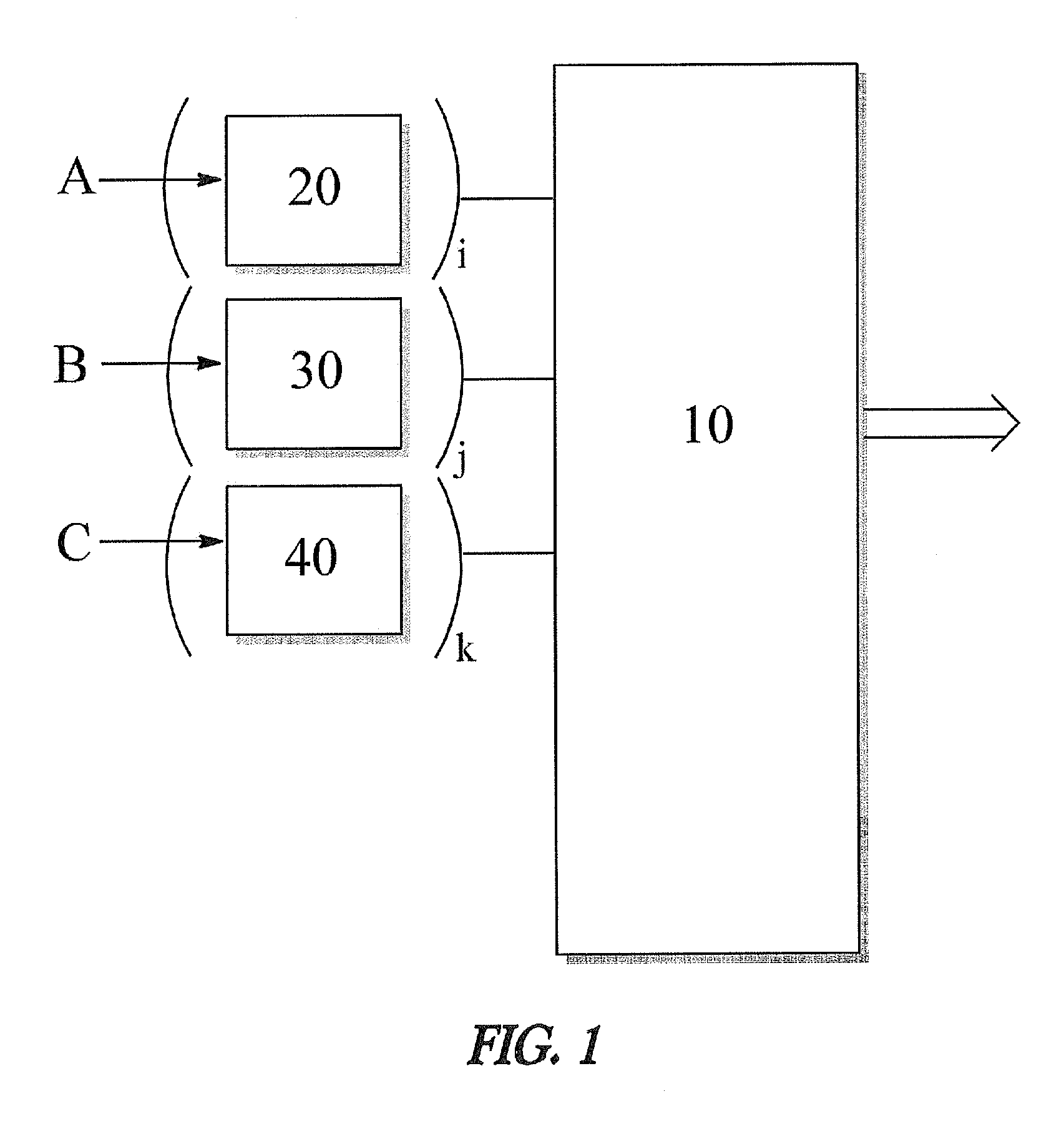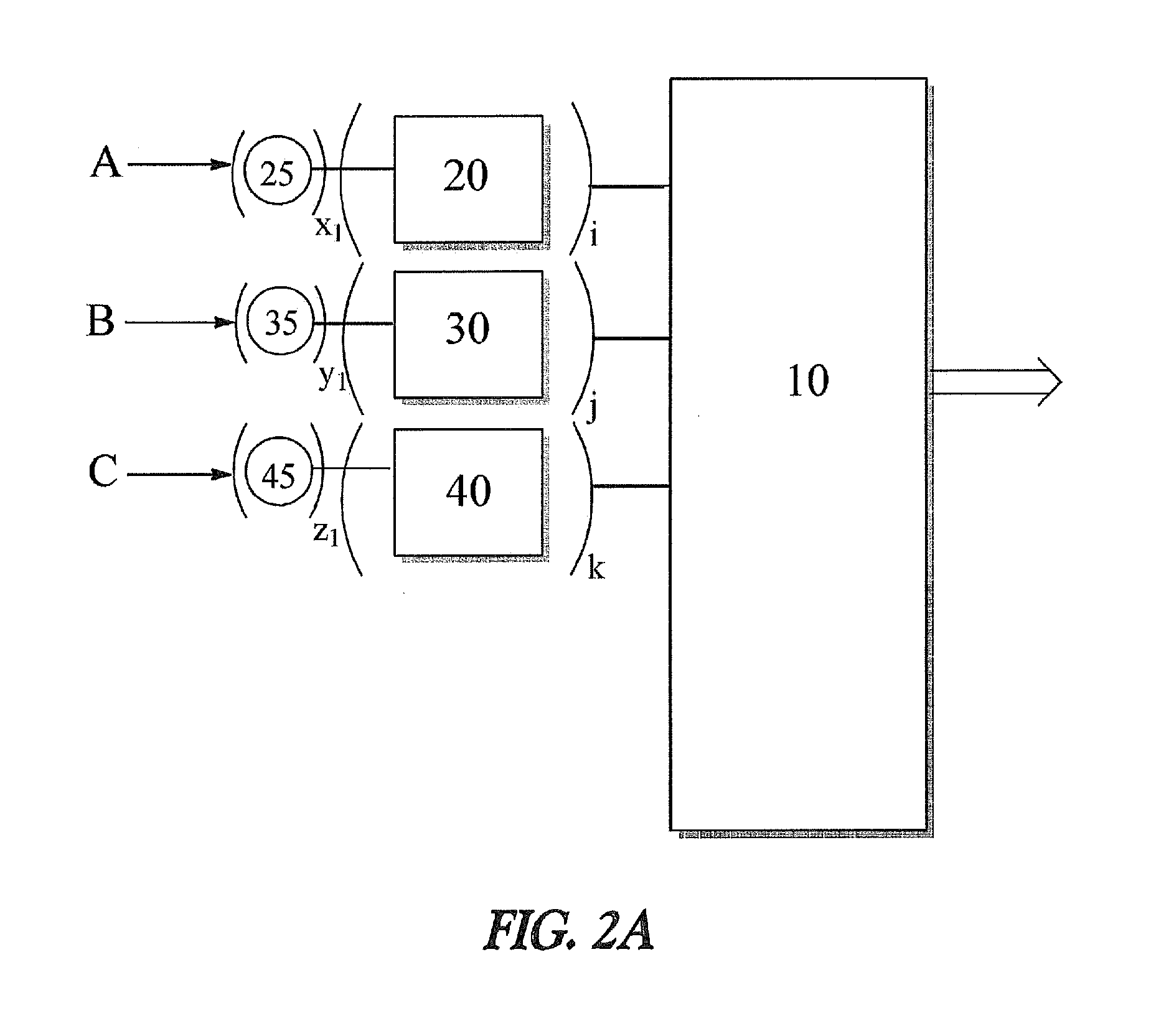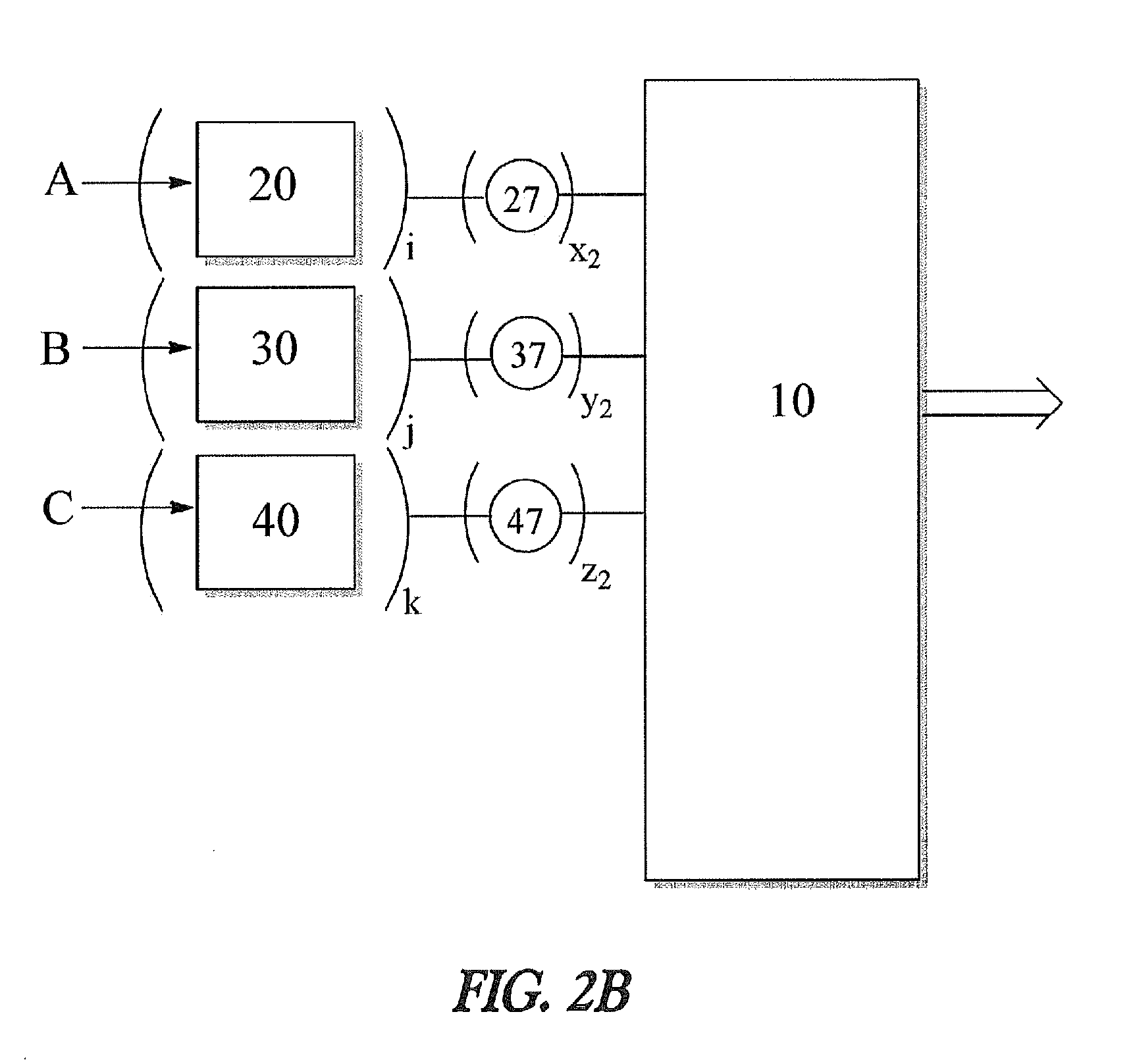Apparatus and method for decreasing humidity during an andrussow process
a technology of andrussow and humidity control, applied in the direction of hydrogen cyanide preparation/purification/separation, separation of dispersed particles, separation processes, etc., can solve the problems of reducing efficiency, inefficiencies and potentially problematic gas ratios, and compromising control, so as to reduce the efficiency of conversion, increase heat capacity, and reduce the effect of efficiency
- Summary
- Abstract
- Description
- Claims
- Application Information
AI Technical Summary
Benefits of technology
Problems solved by technology
Method used
Image
Examples
example 1
[0093]This Example illustrates how the conversion of ammonia to HCN can vary depending upon the humidity of the air used as an oxygen-containing feedstream during an air Andrussow process.
[0094]An Andrussow process is performed using methane, ammonia, and air feedstreams fed into the reactor at a set feed rate. The reaction is conducted in the presence of a platinum-containing catalyst. A 4 inch internal diameter stainless steel reactor with ceramic insulation lining inside is used for pilot scale test. Forty sheets of 90 wt % Pt / 10 wt % Rh 40 mesh gauze from Johnson Matthey (USA) are loaded as catalyst bed. Perforated alumina tile is used for catalyst sheet support. The total flow rate is set at 2532 SCFH (standard cubic foot per hour). In a simulated manufacturing sequence, three reactors are used in an Andrussow reaction facility to generate hydrogen cyanide from a reaction mixture of about 17 vol % methane, about 19 vol % ammonia, and about 64 vol % air in the presence of the pl...
example 2
[0099]This Example illustrates the problems of variable humidity in an air Andrussow process. Such problems include increased by-product formation and an increased need for equipment cleaning and / or replacement.
[0100]A 4 inch internal diameter stainless steel reactor with ceramic insulation lining inside is used for pilot scale test. Forty sheets of 90 wt % Pt / 10 wt % Rh 40 mesh gauze from Johnson Matthey (USA) are loaded as catalyst bed. Perforated alumina tile is used for catalyst sheet support. The total flow rate is set at 2532 SCFH (standard cubic foot per hour). In a simulated manufacturing sequence, three reactors are used in an Andrussow reaction facility to generate hydrogen cyanide from a reaction mixture of about 17 vol % methane, about 19 vol % ammonia, and about 64 vol % air in the presence of the platinum catalyst. The gaseous product stream from the reactors contains about 76 mol % N2, 4 mol % hydrogen cyanide, about 1.5 mol % unreacted ammonia, about 8 mol % hydrogen...
example 3
[0105]This Example illustrates the benefits of using an air feedstream with consistent water content. Such benefits can include reduced by-product formation and reduced carbon build-up when air with consistent water content is employed as the oxygen-containing feedstream in an Andrussow process.
[0106]The Andrussow process can be performed as described in Example 2 except that the water content of the air feedstock is regulated to substantially constant levels of about 1% specific humidity. Production of HCN over the three month period is at least about 0.5% higher than observed for Example 2.
[0107]After three months, the reactor is shut down. Substantially less carbon build-up is observed in lines leading out of the reactor and little or no damage to the catalyst is observed. The catalyst pack is not replaced.
[0108]All patents and publications referenced or mentioned herein are indicative of the levels of skill of those skilled in the art to which the invention pertains, and each su...
PUM
| Property | Measurement | Unit |
|---|---|---|
| water content | aaaaa | aaaaa |
| humidity | aaaaa | aaaaa |
| adsorption | aaaaa | aaaaa |
Abstract
Description
Claims
Application Information
 Login to View More
Login to View More - R&D
- Intellectual Property
- Life Sciences
- Materials
- Tech Scout
- Unparalleled Data Quality
- Higher Quality Content
- 60% Fewer Hallucinations
Browse by: Latest US Patents, China's latest patents, Technical Efficacy Thesaurus, Application Domain, Technology Topic, Popular Technical Reports.
© 2025 PatSnap. All rights reserved.Legal|Privacy policy|Modern Slavery Act Transparency Statement|Sitemap|About US| Contact US: help@patsnap.com



